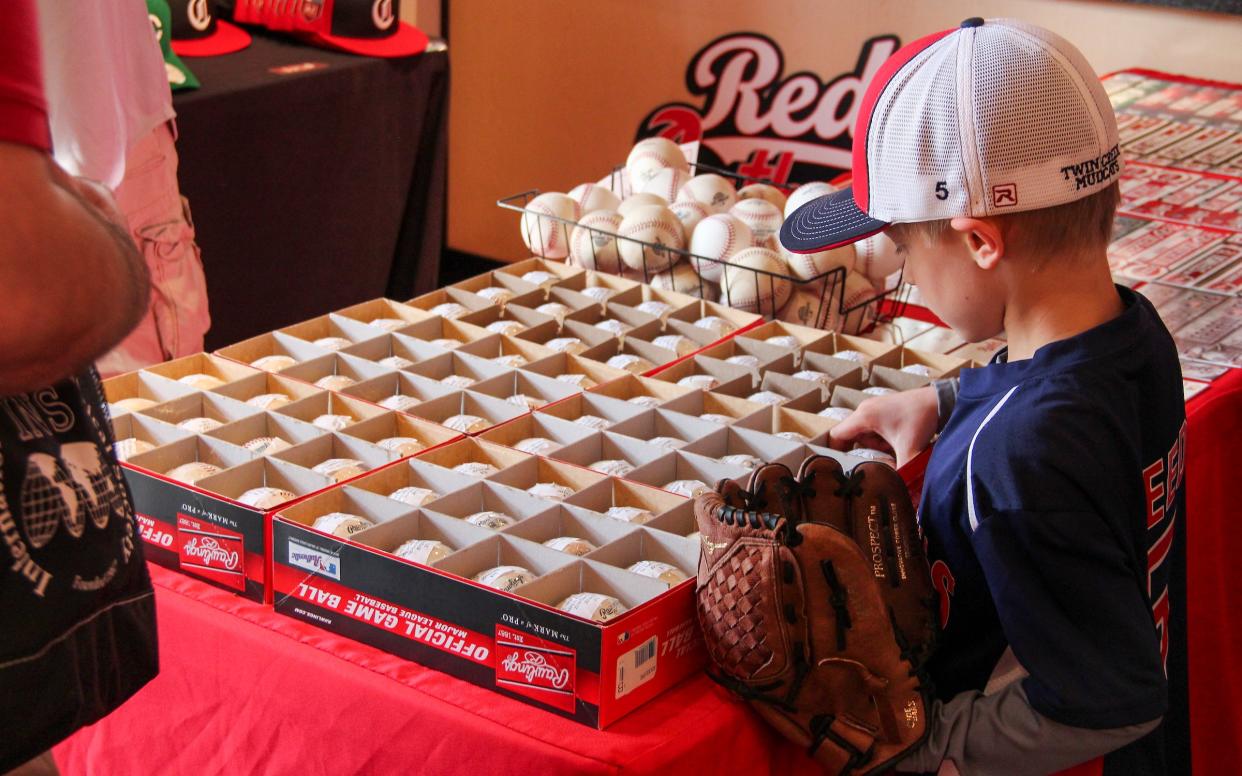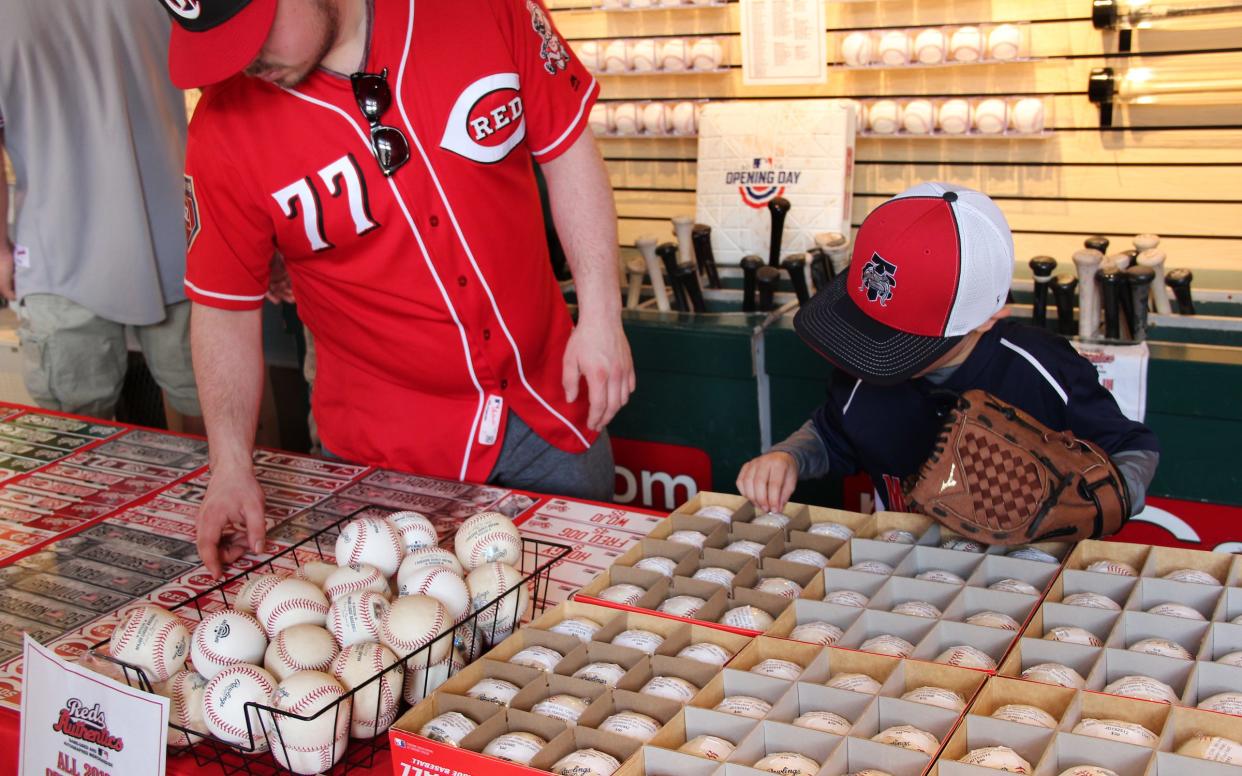Just Askin': Reds use more than 100 baseballs per game. What happens to them afterward?

The Enquirer's Just Askin' series aims to answer the questions that no one seems to have an answer for, not even Google.
When they turn out the lights after a Cincinnati Reds game at Great American Ballpark, not all of the on-field equipment is going to be reused.
MLB rules say a brand new set of balls must be used for each game, and they're not cheap. Rawlings sells official MLB competition-grade baseballs for $25 a pop online.
But if one of those balls gets air during a professional game, the price increases dramatically. Tens of thousands of dollars more in some cases, and it's for a charitable cause.
What happens to baseballs after Cincinnati Reds games?
The Reds go through between 100 and 150 balls per game. Of those, between 60 and 72 balls are discarded after use, due to being scuffed, dirty or because of other imperfections.
There's a person in the dugout who collects those balls and stows them away for safekeeping. That's Jim Myers, director of the Reds Authentics memorabilia outlet at Great American Ball Park.
Here's how it works, according to Myers. Once a play is made and the ball is no longer deemed usable, the ball is thrown over to the dugout where a special hologram sticker is placed on each ball. The inscription will include the names of the pitcher and hitter, the pitch speed, and the outcome of the play. All of that matters to fans.

For example, a ball used in a triple play would be worth more than a single. A home run would rack up a higher bill, as would an extra-fast pitch. The players matter, too. A ball hit by Jonathan India or Joey Votto would likely cost more than those hit by a lesser-known, third-string player. Balls used in a 100 mph pitch are highly sought after by collectors, too, and run higher.
Balls sold at Reds Authentics typically run between $30 and $40, but, some balls and other items can go above and beyond the average going price.
The most expensive item Myers can remember was a $125,000 Shohei Ohtani jersey, when he hit a home run while playing in Cincinnati.
Where does the money go?
MLB memorabilia is a multimillion-dollar industry. At the Reds store, the money goes to a good cause.
All proceeds from sales made at Reds Authentics go to the Reds Community Fund, the nonprofit arm of the team. The foundation provides youth baseball and softball programs for area children. That includes funding jerseys and equipment, hosting youth baseball camps, building fields and other charitable actions.
Other unusual baseball memorabilia sold at Reds Authentics
Baseballs are just the tip of the iceberg of what's sold at Reds Authentics. If the Reds used it in some form or fashion, it's fair game.
Some memorabilia you'd expect, like baseball bats, helmets, jerseys, cleats and bases, but some merchandise is less predictable. Among the stranger items sold at the store through the years, according to Myers:
Benches from dugouts.
Locker chairs.
Stadium lights.
Wall padding.
One memorable occasion for Myers was when Scooter Gennett scored four home runs in one game, only done 18 times in MLB history. Gennett signed jars of dirt that were around second base, his position.
Do you have a question for Just Askin'? Send it to us at cinlocalnews@enquirer.com.
This article originally appeared on Cincinnati Enquirer: What happens to baseballs after Cincinnati Reds games?
